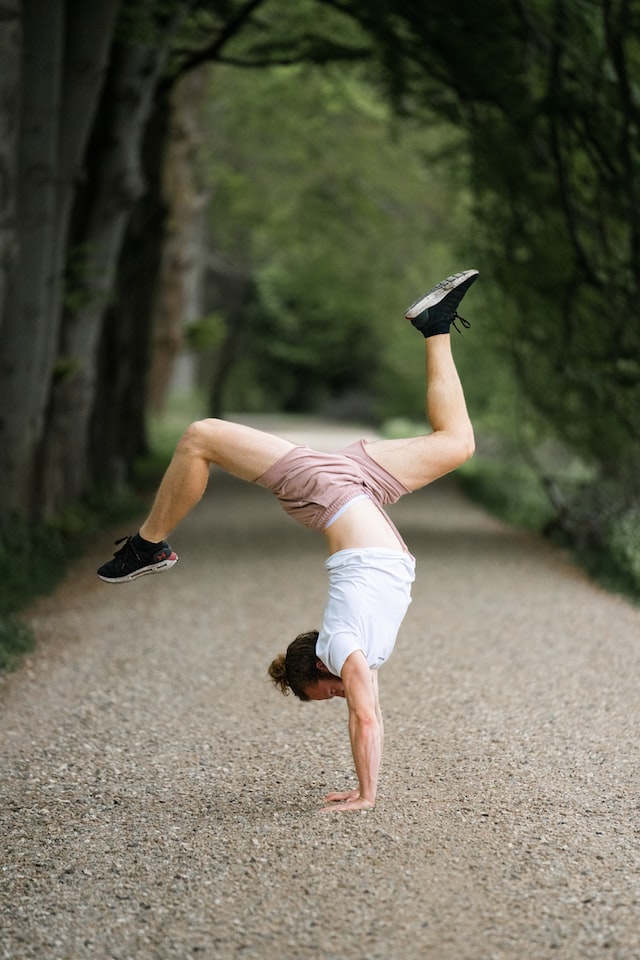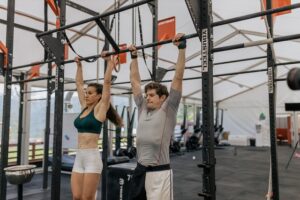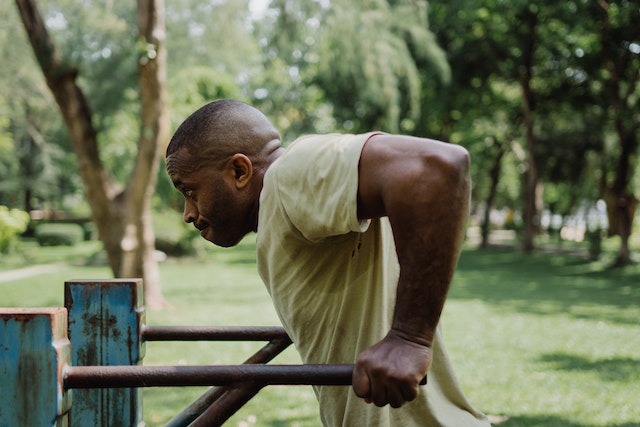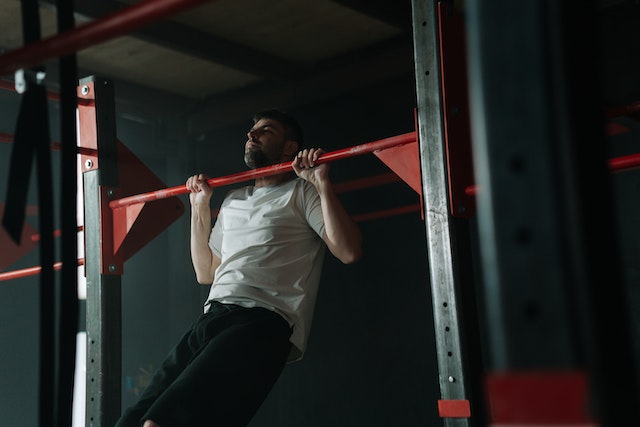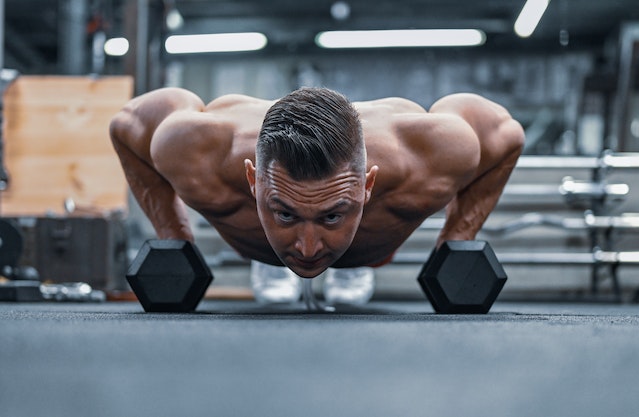Calisthenics is a type of exercise that utilizes bodyweight movements to build strength, flexibility, and endurance. One of the most challenging calisthenics exercises is the hollowback handstand, which requires a great deal of core and upper body strength, balance, and flexibility.
This exercise involves holding a handstand position while curving the spine into a “hollow” shape. It is a highly advanced calisthenics move that requires proper preparation and technique to achieve. The benefits of practicing this exercise are numerous, including increased strength and flexibility in the shoulders, back, and core, improved balance and body awareness, and a confidence boost.
In this article, we will provide a step-by-step guide on how to achieve a hollowback handstand, as well as discuss the benefits of the exercise and how it can improve overall physical fitness.
What is a Hollowback Handstand?
A hollowback handstand is an advanced calisthenics exercise that requires a high degree of strength, flexibility, and balance. This exercise is characterized by a deep backbend, where the spine is curved into a “hollow” shape, while balancing on the hands. In this pose, the hips are lifted higher than the shoulders, creating an upside-down “V” shape with the body.
Differences between a regular handstand and a hollowback handstand
While both exercises involve balancing on the hands, a regular handstand requires the body to be straight with no curve in the spine, whereas a hollowback handstand requires a deep backbend. The hollowback handstand also requires greater shoulder flexibility, as the arms are extended overhead, and the legs are lifted higher than in a regular handstand. Overall, the hollowback handstand is a more challenging and advanced exercise than a regular handstand, requiring a high degree of physical fitness, strength, and flexibility.
Benefits of Practicing a Hollowback Handstand
Increased shoulder and back strength
The hollowback handstand requires a great deal of strength in the shoulders and upper back. Practicing this exercise can help to build strength in these areas, which can improve posture and reduce the risk of injury.
Improved balance and body awareness
Balancing in a hollowback handstand requires a high degree of body awareness and control. Practicing this exercise can help to improve overall balance and coordination, which can translate to other areas of physical activity.
Enhanced flexibility
The deep backbend required in a hollowback handstand can help to improve spinal flexibility, as well as flexibility in the hips and legs. This increased flexibility can improve overall range of motion, reduce muscle tension, and improve athletic performance.
Confidence booster
The ability to perform a hollowback handstand can be a significant confidence booster, as it is a challenging and advanced calisthenics exercise. Mastering this exercise can help to build self-esteem and a sense of accomplishment, which can translate to other areas of life.
Overall, practicing a hollowback handstand can help to improve overall physical fitness and well-being, as well as provide a fun and challenging exercise to incorporate into a calisthenics routine.
Preparations for Doing a Hollowback Handstand
Before attempting a hollowback handstand, it is important to prepare the body with proper warm-up, strengthening, and stretching exercises. Here are some helpful tips to get started:
Warm-up exercises
A proper warm-up is essential to prevent injury and prepare the body for the physical demands of a hollowback handstand. Some effective warm-up exercises for a hollowback handstand include wrist circles, shoulder rolls, and leg swings.
Strengthening exercises
To perform a hollowback handstand, you need to have strong upper body and core muscles. Strengthening exercises such as push-ups, dips, and pull-ups can help to build the necessary strength for this exercise.
Stretching exercises
The hollowback handstand requires a deep backbend, so it is important to stretch the spine and hip flexors to prepare the body for this movement. Some helpful stretching exercises include Cobra pose, Camel pose, and Pigeon pose.
By incorporating these preparatory exercises into your calisthenics routine, you can help to build the strength, flexibility, and control necessary to perform a successful hollowback handstand.
Technique for Achieving a Hollowback Handstand
Achieving a hollowback handstand requires proper technique and a strong mind-body connection. Here are some step-by-step instructions to help you get started:
Step-by-step instructions
- Start in a standing position with your feet hip-distance apart.
- Place your hands on the ground in front of you, shoulder-width apart.
- Walk your feet back into a downward dog position, with your hips lifted high.
- Slowly shift your weight forward, bringing your shoulders over your wrists.
- Lift one leg off the ground and start to bend the other leg, bringing the foot towards your head.
- Press into your hands to lift the other leg off the ground and extend it towards the sky.
- Once you have found your balance, start to bend backwards, bringing your feet towards the ground and creating a hollow shape with your back.
- Hold the pose for several breaths, maintaining balance and control.
- To come out of the pose, slowly reverse the steps and return to a standing position.
Tips for maintaining balance
To maintain balance in a hollowback handstand, it is important to engage your core muscles, keep your gaze focused on a single point, and use small adjustments in your fingers and toes to maintain stability. Additionally, be sure to take deep breaths and relax into the pose as much as possible.
Modifications for beginners
For beginners, it may be helpful to start with a wall-supported hollowback handstand, using the wall to help maintain balance and support your weight. You can also practice the pose in stages, first working on the backbend, then adding in the leg lift, and finally working on achieving the full pose. Remember to listen to your body and work at your own pace, gradually building strength and flexibility over time.
Common Mistakes and How to Avoid Them
As with any exercise, there are common mistakes that can prevent you from achieving a successful hollowback handstand. Here are a few to watch out for:
Incorrect hand and body position
It’s important to have proper hand and body positioning to maintain balance and prevent injury. Make sure your hands are placed shoulder-width apart, and your fingers are spread wide for maximum stability. Your body should be in a straight line, with your hips lifted and your legs extended toward the ceiling.
Not engaging the core
The core muscles play a vital role in maintaining balance during a hollowback handstand. Make sure to engage your abs, lower back, and glutes to keep your body straight and stable. Failing to engage these muscles can cause your body to sag or your legs to fall forward.
Lack of preparation
Attempting a hollowback handstand without proper preparation can lead to injury. Make sure to warm up with exercises that stretch and strengthen the shoulders, back, and core. It’s also important to practice regular handstands and other inversions to build the necessary strength and balance.
By avoiding these common mistakes, you can increase your chances of success and reduce the risk of injury. Remember to always listen to your body and take breaks as needed.
Tips for Progression
If you’re looking to progress your hollowback handstand practice, there are a few things you can do to challenge yourself and improve your strength, flexibility, and balance. Here are some tips for progression:
Exercises to improve strength and flexibility
To achieve a successful hollowback handstand, you need a combination of strength and flexibility. Incorporating exercises like shoulder presses, pull-ups, and backbends can help you build the necessary strength and mobility. Additionally, stretching exercises like downward dog, pigeon pose, and camel pose can help improve your flexibility.
Modifications to increase difficulty
Once you have mastered the basic hollowback handstand, you can start to make modifications to increase the difficulty. This can include extending one leg or both legs, lifting one arm or both arms, or transitioning in and out of the pose.
Advanced variations
For those looking to take their practice to the next level, there are several advanced variations of the hollowback handstand. These can include the one-armed hollowback handstand, the straddle hollowback handstand, and the pike hollowback handstand. These variations require advanced strength, flexibility, and balance, so it’s important to progress slowly and with caution.
Remember to always listen to your body and only progress at a pace that feels comfortable and safe for you. With consistent practice and dedication, you can achieve your goals and master the hollowback handstand.
Final Thoughts
In summary, the hollowback handstand is an advanced calisthenics exercise that requires strength, balance, and flexibility. Through regular practice, the pose can lead to increased shoulder and back strength, improved balance and body awareness, enhanced flexibility, and a boost in confidence.
Before attempting the hollowback handstand, it’s important to properly prepare the body through warm-up exercises, strengthening exercises, and stretching exercises. Additionally, it’s important to master the proper technique and avoid common mistakes such as incorrect hand and body positioning, not engaging the core, and lack of preparation.
For those looking to progress in their hollowback handstand practice, incorporating exercises to improve strength and flexibility, modifications to increase difficulty, and advanced variations can be helpful.
Overall, the hollowback handstand is a challenging yet rewarding pose to master. With consistent practice and dedication, anyone can achieve this impressive calisthenics feat. Don’t be afraid to try and always remember to stay safe and listen to your body.
If you’re interested in learning more about calisthenics or the hollowback handstand, there are many resources available online such as instructional videos and tutorials. Happy practicing!
